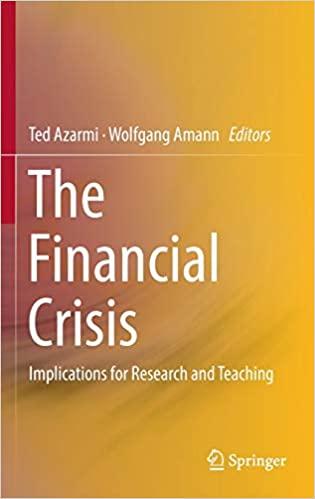Maggie's Magazines (MM) has straight nonconvertible bond that currently yield 9%. MM's stock sells for $22 per share, has an expected constant growth rate of 6%, and has a dividend yield of 4$. MM plans on issuing convertible bonds that will have a $1,000 par value, a coupon rate of 8%, a 20-year maturity, and a conversion ratio of 32 (i.e., each bond could be convertible into 32 shares of stock). Coupon payments will be made annually. The bonds will be noncallable for 5 years, after which they will be callable at a price of $1,090; this call price would decline by $6 per year in Year 6 and each year thereafter. For simplicity, assume that the bonds may be called or converted only at the end 46 of a year, immediately after the coupon and dividend payments. Management will call the bonds when the bonds' conversion value exceeds 25% of the bonds' par value (not their call price) Anticipated stock price Conversion at year end Value (1) (2) 22.00 Convert? (Yes, no, or already) Straight debt cash flow to value of bondholder convertible if converted (3) (4) 39 Year No No 3 63 Conversion year = 34 35 Value in conversion = b. What is the expected rate of return (i.e., before-tax component cost) on the proposed convertible Using the RATE function: N= PMT= $60.00 PV = -$1,000.00 FV = Rate = As a check, using the IRR function and the cash flows in column F: Expected return to bondholders c. Assume that the convertible bondholders require a 9% rate of return. If the coupon rate remains unchanged, then what conversion ratio will give a bond price of $1000? Expected return required by convertible bondholder: 9% Hint: Use Goal seek to set the difference between the convertible bondholders' current return and target return to zero by changing the input cell for the conversion ratio. Current difference between bondholders' current expected return and target return (multiplied by 1000) = Conversion ratio (given original convertible coupon rate) that produces the required yield (Note: after using Goal Seek, cut and paste the conversion ratio into the yellow cell): Maggie's Magazines (MM) has straight nonconvertible bond that currently yield 9%. MM's stock sells for $22 per share, has an expected constant growth rate of 6%, and has a dividend yield of 4$. MM plans on issuing convertible bonds that will have a $1,000 par value, a coupon rate of 8%, a 20-year maturity, and a conversion ratio of 32 (i.e., each bond could be convertible into 32 shares of stock). Coupon payments will be made annually. The bonds will be noncallable for 5 years, after which they will be callable at a price of $1,090; this call price would decline by $6 per year in Year 6 and each year thereafter. For simplicity, assume that the bonds may be called or converted only at the end 46 of a year, immediately after the coupon and dividend payments. Management will call the bonds when the bonds' conversion value exceeds 25% of the bonds' par value (not their call price) Anticipated stock price Conversion at year end Value (1) (2) 22.00 Convert? (Yes, no, or already) Straight debt cash flow to value of bondholder convertible if converted (3) (4) 39 Year No No 3 63 Conversion year = 34 35 Value in conversion = b. What is the expected rate of return (i.e., before-tax component cost) on the proposed convertible Using the RATE function: N= PMT= $60.00 PV = -$1,000.00 FV = Rate = As a check, using the IRR function and the cash flows in column F: Expected return to bondholders c. Assume that the convertible bondholders require a 9% rate of return. If the coupon rate remains unchanged, then what conversion ratio will give a bond price of $1000? Expected return required by convertible bondholder: 9% Hint: Use Goal seek to set the difference between the convertible bondholders' current return and target return to zero by changing the input cell for the conversion ratio. Current difference between bondholders' current expected return and target return (multiplied by 1000) = Conversion ratio (given original convertible coupon rate) that produces the required yield (Note: after using Goal Seek, cut and paste the conversion ratio into the yellow cell)









